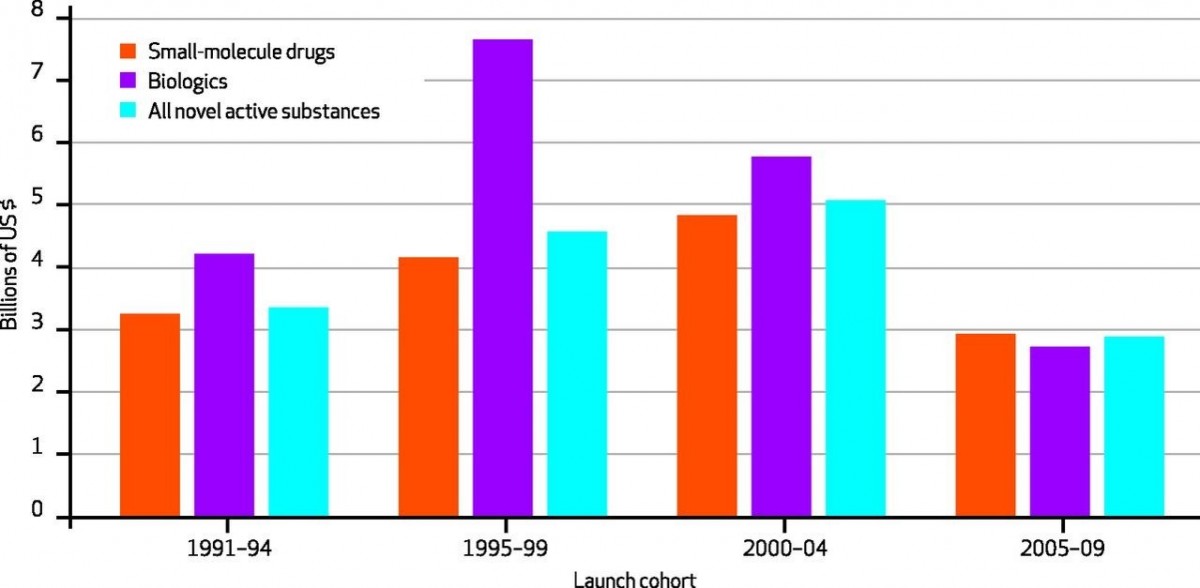For decades, the pharmaceutical industry has been highly profitable. The recipe for such profits has been pretty simple for most of the last half-century–discover a chemical or molecule that treats a common problem, like hypertension or diabetes or erectile dysfunction, and make billions of dollars while that product is still under patent protection. But of course, profits were never so simple. It takes billions of dollars to develop one new drug suitable for testing in humans and even then, the drug might turn out to be too toxic or to have too little benefit to make it on to the market. It might take a handful of such drugs before a company finally finds one that works, a single blockbuster that can hopefully make up for all that investment. But the cost of new drug development is rising, and the number of big wins is declining–with the number of common illnesses in need of interventions dwindling–so it is getting increasingly difficult to bring enough blockbusters to market to make up for all those drugs that go bust.
Are pharmaceutical profits passé?
Some economists would say that it’s about time for the industry to see a decline in profits. You see, economic theory holds that in competitive marketplaces, profits decline until no one makes any money. When pharmaceutical profits soar, more companies should enter into the business, thereby bringing more drugs to market at lower prices until profits dwindle enough to reduce the incentive for new companies to compete for pharmaceutical profits. By this reasoning, decades of soaring pharmaceutical profits were not a sign of a robust industry but, instead, were evidence of a broken market.
If that view is true, then you could argue that the industry is finally maturing. At least that’s the suggestion of a study in Health Affairs by Ernst Berndt and colleagues, who analyzed revenues for pharmaceutical products released since the early ’90s and found that the average lifetime sales of pharmaceutical drugs that make it to market appear to be declining:

In the mid-90s, drugs that came to market brought in an average of $4 to $7 billion in sales. From 2000-2004, that number declined to around $5 billion. But between 2005 and 2009, that number didn’t even reach $3 billion. Now, an average of $3 billion of sales might still sound pretty good. But keep in mind that research costs are rising for the pharmaceutical industry. And the number of new drugs isn’t rising in parallel to these surging R&D costs.
To read the rest of this article, please visit Forbes.
